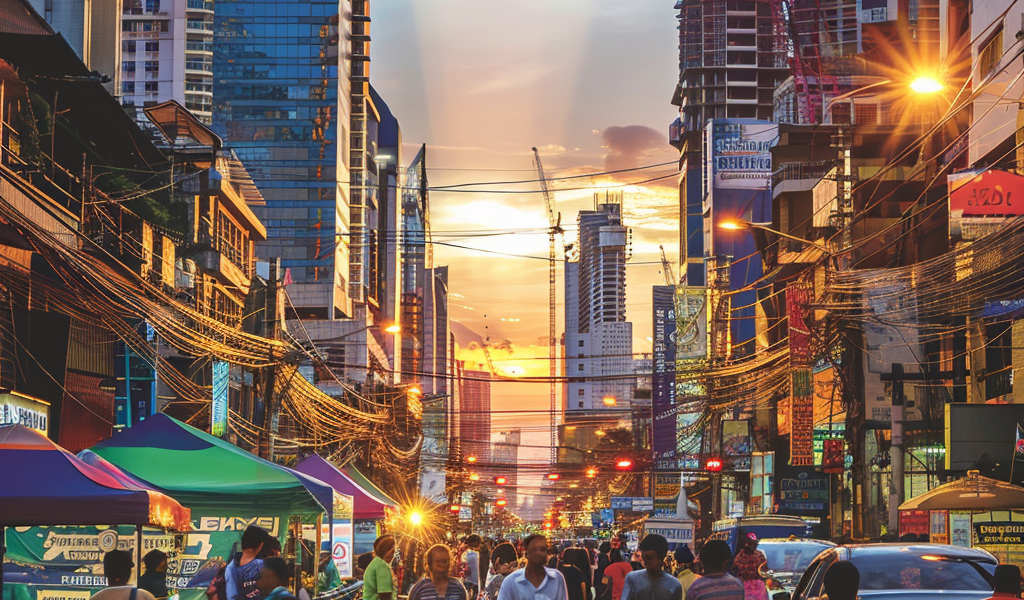The Asian Development Bank (ADB) has recently reaffirmed its economic growth forecasts for the Philippines, projecting a robust growth rate of 6% for the year 2024 and an increase to 6.2% in 2025. This optimistic outlook comes as the nation experiences a moderation in inflation rates and a series of policy adjustments aimed at stimulating domestic demand.
According to the ADB’s latest economic outlook, the Philippines, alongside Vietnam, is poised to be one of the fastest-growing economies in Southeast Asia over the next few years. The growth rate of 6% for both countries is set to outpace their regional neighbors, including Cambodia with a projected growth of 5.8%, Indonesia at 5%, and Malaysia at 4.5%. Other countries such as Laos, Brunei, Timor-Leste, Singapore, Thailand, and Myanmar are expected to see even lower growth rates, with Myanmar lagging significantly at just 0.8%.
Despite the positive forecast, the ADB’s growth projection for the Philippines remains at the lower end of the government’s target range of 6-7% for this year. Furthermore, the forecast for 2025 is below the government’s anticipated growth of 6.5-7.5%. This discrepancy highlights the challenges that the Philippine economy may face in achieving its ambitious goals.
Pavit Ramachandran, the ADB’s Philippines Country Director, emphasized that the essential components for sustained economic growth are already in place. He noted that rising government revenues are facilitating increased public expenditures on crucial infrastructure and social services, which in turn are driving employment and consumption. Additionally, ongoing reforms aimed at opening the economy to greater investment opportunities are expected to further bolster growth.
In the first half of the year, the Philippine economy demonstrated resilience, achieving an average GDP growth rate of 6%. To align with the lower end of the government’s target, the economy must maintain this growth rate in the latter half of the year. The ADB has expressed confidence that sustained public investment will continue to play a pivotal role in driving economic growth.
Key sectors such as manufacturing, construction, and services are anticipated to contribute positively to the overall economic output. The ADB has also pointed out that external demand for electronics exports presents a favorable outlook for the Philippines. The country is primarily engaged in low value-added segments of the electronics industry, including assembly, testing, and packaging. However, the ADB has cautioned that the Philippines may not fully capitalize on the rising demand for high-tech products, which could limit its growth potential compared to other nations in the region.
A closer examination of the regional economic landscape reveals that while the Philippines is experiencing a surge in exports, countries like Cambodia, Indonesia, and Thailand may be better positioned to benefit from the high-tech product demand due to their involvement in more advanced manufacturing processes.
As the Philippines moves forward, the government’s focus on infrastructure development and investment reforms will be critical in ensuring that the country not only meets its growth targets but also enhances its competitiveness in the global market. With the ADB’s support and ongoing economic initiatives, the Philippines is set to navigate the complexities of regional and global economic challenges while striving for sustainable growth.





